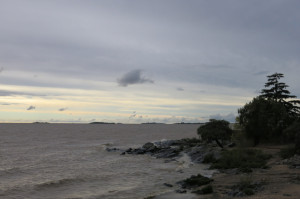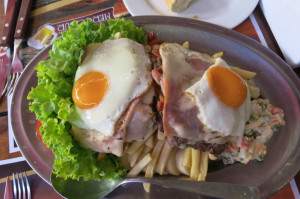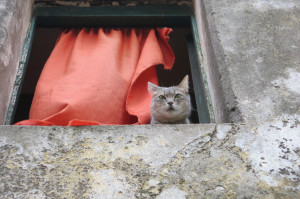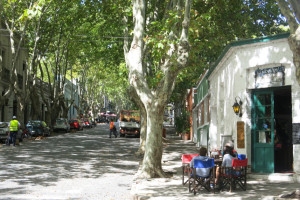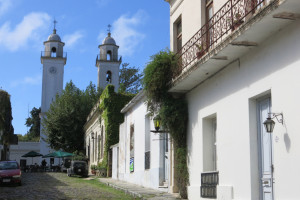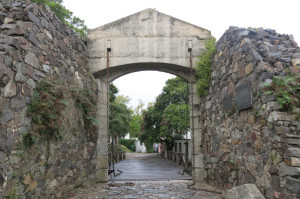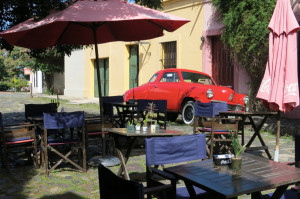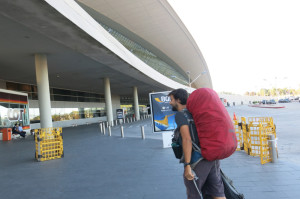We’re Going to Uruguay?
by Dave
March 30 – 31
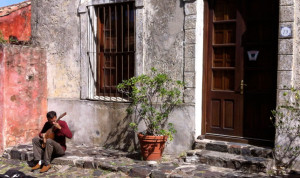 Talk about unexpected stops. At no point ever did we anticipate exploring this small South American country tucked between Brazil and Argentina on the continent’s Atlantic coast, but there we were. Due to a random flight search that revealed an unbeatable fare from Montevideo (the capital of Uruguay, but you already knew that…) to Lima, we worked in two days in Uruguay on the tail end of our Argentinian exploration.
Talk about unexpected stops. At no point ever did we anticipate exploring this small South American country tucked between Brazil and Argentina on the continent’s Atlantic coast, but there we were. Due to a random flight search that revealed an unbeatable fare from Montevideo (the capital of Uruguay, but you already knew that…) to Lima, we worked in two days in Uruguay on the tail end of our Argentinian exploration.
After a quick ferry from Buenos Aires, we settled in for 36 hours in the UNESCO World Heritage site city of Colonia del Sacramento, more commonly just called Colonia.
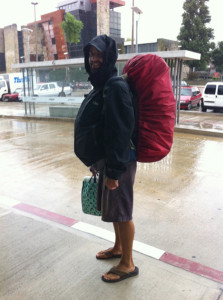
Colonia has a mild humid subtropical climate, which means it rains a lot. Exhibit A. (EDITOR’S NOTE: No, Dave has not preternaturally gained his well-earned gut two decades early. That’s just our small backpack containing all our electronics. Because ALWAYS SAVE THE BACKPACK.)
Colorful cobblestone streets and squares, old architecture, cafes and local food (namely Chivito, a heart attack waiting to happen on an overflowing plate) filled up our day and a half in this charmer before we hopped a bus to Montevideo for our flight out of the country.
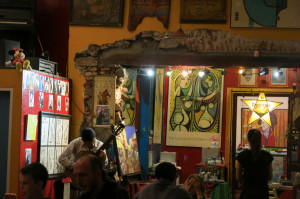
Live music and delicious food at El Drugstore, a popular restaurant in town. Naturally, we had chivito.

Along with the similarly overpriced signature Uruguayan drink, Medio y Medio, a sparkling wine comprised of moscato grapes and pinot blanc. A must, according to Noelle.
And now we can say we’ve been to Uruguay. So we’ve got that going for us. Which is nice.
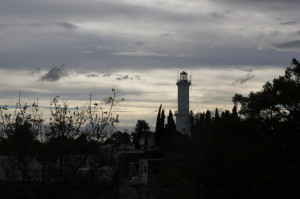
The Barrio Histórico was originally enclosed by a fortification wall, but most of it was removed in the late 1700’s. Colonia’s 19th-century lighthouse, one of the town’s most prominent landmarks, provides an excellent view of the old town.
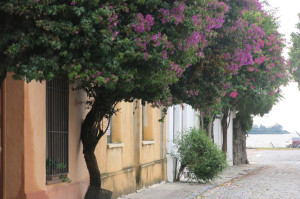
The rain let up our second day so we were able to fully appreciate the walkability of the town and the charm of the irregular terrain-accomodating street plan in the historic quarter.
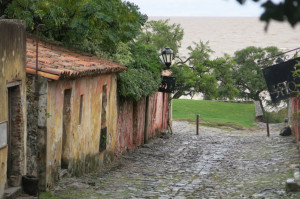
Colonia’s “Street of Sighs,” an 18th-century mossy-stoned passageway, lined with russet and gold ombre stucco buildings.
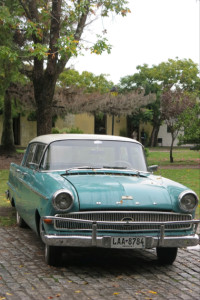
The town has an interesting fascination with vintage cars. You’ll find them “casually parked” (aka on display) on the cobblestone streets throughout the city.

